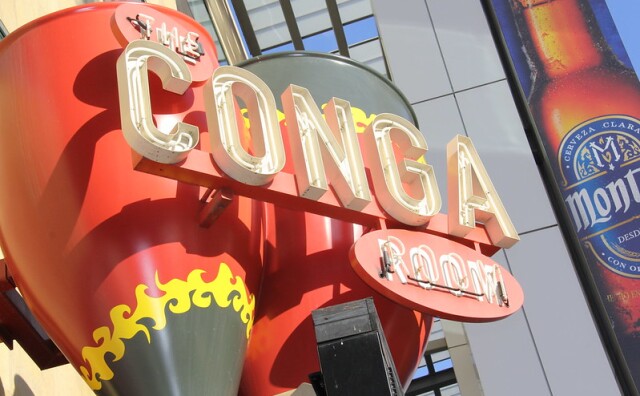This archival content was written, edited, and published prior to LAist's acquisition by its current owner, Southern California Public Radio ("SCPR"). Content, such as language choice and subject matter, in archival articles therefore may not align with SCPR's current editorial standards. To learn more about those standards and why we make this distinction, please click here.
Photos: Black Los Angeles During The First 'Great Migration'
Between 1910 and 1970, 6 million Black Americans left the rural South for urban areas in the Northeast, Midwest, and West—including, of course, Los Angeles. During this "Great Migration" the populations of northern industrial cities like Chicago, New York, and Philadelphia exploded with Black Americans looking to escape the increasingly-frequent lynchings, racism, and lack of economic opportunity. Detroit's Black population, for example grew from 6,000 to 120,000—that's a 2,000 percent increase—between 1915 and 1920 alone.
The Great Migration would naturally come to Los Angeles, but it would take a bit longer before it reached the kinds of stratospheric population increases as its Northern and Midwestern counterparts.
In 1910, there were 7,599 Black individuals living in Los Angeles. By 1920, that number nearly doubled to 15,579. It wasn't until the 1930s and postwar years that the Great Migration as we knew it shaped the population of Los Angeles.
As KCET's Kelly Simpson notes in her series of articles on the Great Migration in L.A, that yes, although the city's Black population didn't really surge until the postwar years, there was nonetheless already a decades-long history of Southern Black migration to Los Angeles. Between the 1890s and 1910 in Los Angeles, as Simpson writes,
Large groups of Black Americans migrated to Los Angeles from Texas, Shreveport, New Orleans and Atlanta to escape the racial violence and bigotry of the South with hopes for better access to wealth. Job opportunities were plentiful, including hauling lumber, digging ditches, cleaning toilets, laying brick, scrubbing laundry and shining shoes. Black migrants quickly laid claim to Central Avenue between 8th and 20th Streets in Downtown Los Angeles, and the area became known as "Brick Block" - with clubs, churches black-owned businesses and newspapers like the California Eagle supplying community needs.
This particular batch of photos, culled from the Los Angeles Public Library's photo collection—specifically, the Shades of L.A. project—showcase the era Simpson writes about, up until the population turning point of the 1930s.
-
Samy Kamienowicz, the man who founded the retail camera stores and became a fixture for the city's creative community, has died. Los Angeles pays tribute.
-
The music will live on through the nonprofit Conga Kids.
-
Known for its elaborate light displays, this year, the neighborhood is expecting a bigger crowd tied to the release of “Candy Cane Lane” on Amazon Prime Video.
-
Dancers at Star Garden demanded better working conditions — including protection from aggressive guests. Up next: An actual contract.
-
The Alliance of Motion Picture and Television Producers rejected the SAG-AFTRA union's request for a separate type of residual payment that actors would get once their programs hit streaming services.
-
Sarah Ramos says she actually likes self-taped auditions, but without regulations: “This is a strain on our resources, a strain on our community and it's untenable.”






